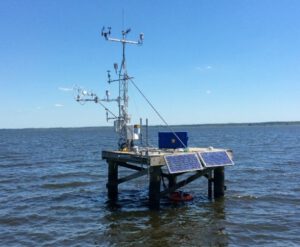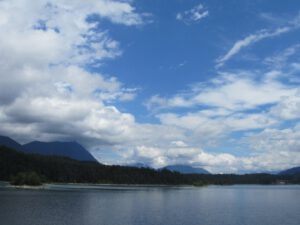Gabriel Katul, PhD
Theodore S. Coile Professor of Hydrology and Micrometeorology
Department of Civil and Environmental Engineering
Duke University, NC
Wed., Oct. 31, 4:10 pm
Robison Classroom (2250 WEB)

Abstract: Bulk mass exchange between an interface emitting or absorbing gas and a turbulent flow, represented by a gas transfer velocity, is commonly described as an empirical function of a mean velocity at some reference height. Such a representation, while of practical significance and continued use in large-scale climate models, misses the most important ingredient to the transfer process itself: turbulent eddies. A large corpus of field and laboratory experiments support the finding that transfer velocities at interfaces subject to turbulent eddies scale as (єv)1/4; where v is the kinematic viscosity and є is the mean turbulent kinetic energy dissipation rate of eddies. Originally predicted from surface renewal theory by Lamont and Scott (1970), this scaling appears to hold for marine and coastal systems, and across many other conditions including transfer of water vapor from rough surfaces into a turbulent atmosphere as shown by (a minor modification to) Brutsaert (1965). In arriving at these results, a number of assumptions were made regarding the surface renewal rate describing the contact durations between eddies and the evaporating or gas-exchanging interface, the diffusional mass transfer process from the surface into eddies, and the internal length scale of eddies. The working hypothesis explored here is that this universal scaling is a direct outcome of the Kolmogorov inertial subrange energy content in eddies modified to include viscous-cutoff thereby by-passing the need for a surface renewal assumption. The connection between energy content in eddies (i.e. a microscopic state) and gas transfer velocities (i.e. macroscopic outcome) may be viewed analogous to a fluctuation-dissipation relation but for turbulent flows.

Bio: Gabriel G. Katul received his B.E. degree in 1988 at the American University of Beirut (Beirut, Lebanon), his M.S. degree in 1990 at Oregon State University (Corvallis, OR) and his Ph.D degree in 1993 at the University of California in Davis (Davis, CA). He is currently the Theodore S. Coile Professor of Hydrology and Micrometeorology at the Nicholas School of the Environment and the Department of Civil and Environmental Engineering at Duke University (Durham, NC). He served as an associate editor for Advances in Water Resources (1998-present), Boundary Layer Meteorology (1998-present), Water Resources Research (2004-2009), the Vadoze zone journal (2000-2003) and served as one of the four editors-in-chief for Advances in Water Resources (2011-2014). He was a visiting fellow at the Commonwealth Science and Industrial Research Organization (CSIRO) in Australia (in 2002), at University of Helsinki (Finland) in 2009 and a FulBright-Italy Distinguished Fellow at Politecnico di Torino (Italy) in 2010. He was also a visiting fellow at École polytechnique fédérale de Lausanne (Switzerland) in 2013, Nagoya University (Japan) in 2014, University of Helsinki (Finland) in 2017, and the Karlsruher Institute for Technology (Germany) in 2017. He received several honorary awards, including an honorary certificate by La Seccion de Agrofisica de la Sociedad Cubana de Fisica in Habana (in 1998), editor’s citation for excellence in refereeing from the American Geophysical Union (in 2008), the Macelwane medal and became thereafter a fellow of the American Geophysical Union (in 2002). In 2012, he received the Hydrologic Science Award from the American Geophysical Union and in 2018, he received the John Dalton medal from the European Geosciences Union. He served as the Secretary General for the Hydrologic Science Section at the American Geophysical Union (2006-2008). Research in Katul’s lab focuses on micro-meteorology and near-surface hydrology with emphasis on heat, momentum, carbon dioxide, water vapor, ozone, particulate matter (including aerosols, pollen, and seeds) and water transport in the soil-plant-atmosphere system as well as their implications to a plethora of hydrological, ecological, atmospheric and climate change related problems.